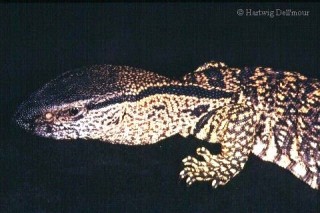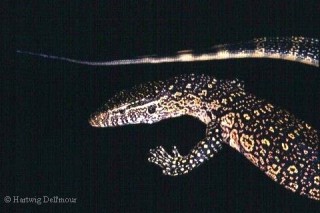
These lizards are placed in close relationship to the snakes with which they share some features (e.g. forked tongue). The biggest of all lizards belongs to this family, Varanus comodoensis, the Comodo dragon with an overall length of nearly 5 m.
"But why, aren't crocodiles much bigger?", I hear you say. Yes, they are - but they do not belong to the lizards.
In fact, they are rather related to dinosaurs, birds and the "living fossil" of New Zealand, the Tuatara. The so-called modern "reptiles" are a very inhomogenous group, showing only superficial similarities, and are kept together for practical reasons. They ought to be split into four major sections: Tortoises (with terrapins and turtles), Rhynchocephalia (with only one member, the tuatara), Crocodiles (with alligators) and Reptiles sensu strictu (Snakes and Lizards).
Monitors feed on insects, birds, snakes, lizards, small mammals - whatever they can overpower and swallow. They have been observed taking carrion and do not hesitate to maraud the nests of Nile Crocodiles eating their eggs or hatchlings. On some islands, monitors are the largest carnivores.
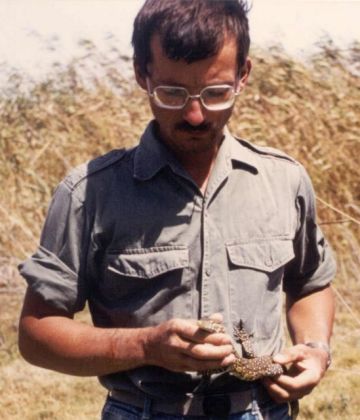
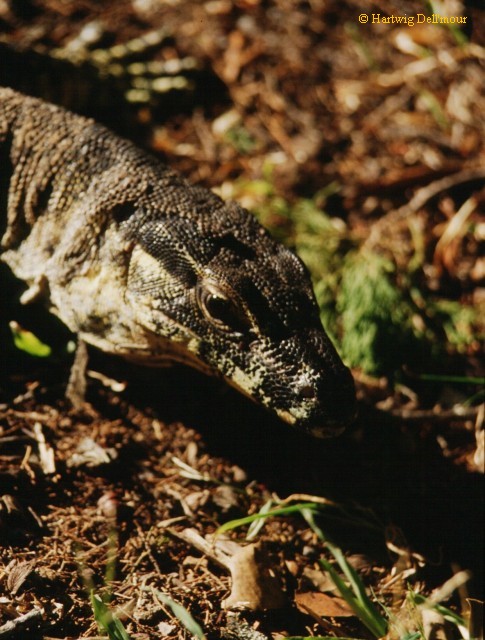
Nile Monitor
In the picture on the front page, I am holding a young Nile Monitor from the Kunene River Mouth (Skeleton Coast, Northwest Namibia).
Nile Monitors have a very vast distribution area on the African Continent, and they are always associated with water. They are extremely agile, the young being vividly coloured, whereas the colour pattern in older specimens tends to become less pronounced.
Lace Monitor
The Australian Lace Monitor is one of the many larger lizards of that continent. Monitors in Australia are also known by the name "Goanna".
Allegedly, they used to be on the daily menu of Australian aboriginals (and maybe still are in some places). Unlike certain tortoises in Madagascar, however, they don't seem to be threatened by extinction through human predation.
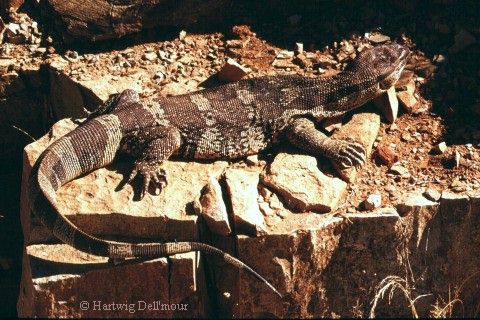
Rock- or white-throated Monitor
The African Rock Monitor inhabits a large distribution area, similar to the Nile Monitor, but it prefers drier habitat.
It is of stouter build and its pattern shows crossbars rather than series of dots.
See below for a comparison of two young specimens of each species.
